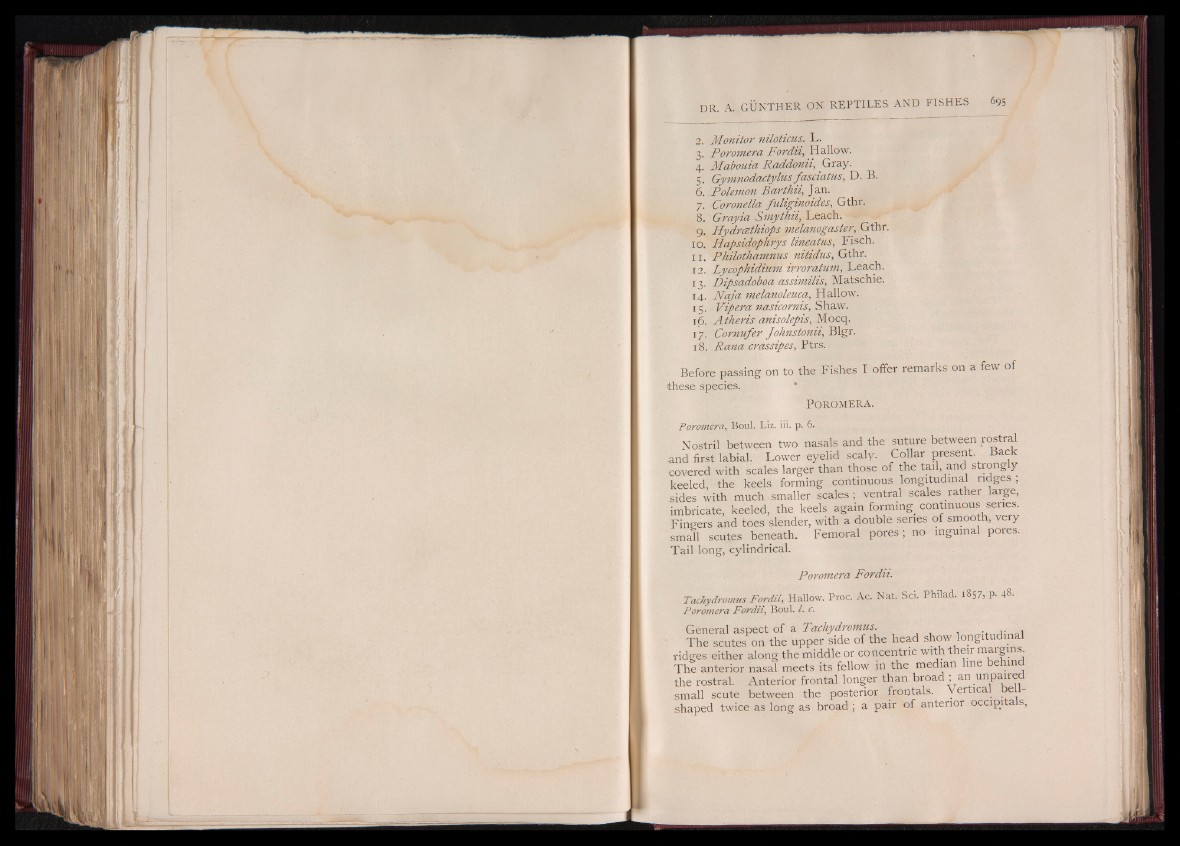
2. Monitor mloticus. L.
3. Poromera Fordii, Hallow.
4. Mabouia Raddqmi, Gray.
5. Gymnodactylus fasciatus, D. B.
6. Polemon Barthii, Jan.
7. Coronella fuliginoides, Gthr.
8. Grayia Smythii, Leach.
9. Hydrcethiops melanogaster, Gthr.
xo. Hapsidophrys lineatus, Fisch.
11. Philothamnus nitidus, Gthr.
12. Lycophidium irroratum, Leach.
13. Dipsadoboa assimilis, Matschie.
14. yV«/<2 melanoleuca, Hallow.
15. Vipera nasicornis, Shaw.
16. Atheris anisolepis, Mocq.
17. Cornufer Johnstonii, Blgr,
18. Rana crassipes, Ptrs.
Before passing on to the Fishes I offer remarks on a few of
these species.
P o r o m e r a .
Poromera, Boul. Liz. iii. p. 6.
Nostril between two nasals and the suture between rostral
and first labial. Lower eyelid scaly. Collar present. Back
covered with scales larger than those of the tail, and strong y
keeled, the keels forming continuous longitudinal ridges;
sides with much. smaller scales; ventral scales rather large,
imbricate, keeled, the keels again forming continuous series.
Fingers and toes slender, with a double series of smooth, very
small scutes beneath. Femoral pores; no inguinal pores.
Tail long, cylindrical.
Poromera Fordii.
Tachydromus Fordii, Hallow. Proc. Ac. Nat. Sci. Philad. 1857, p. 4SPoromera
Fordii, Boul. /. c.
General aspect of a Tachydromus. ., ,• 1
The scutes on the upper side of the head s h o w longitudinal
ridges either along the middle or concentric with-their margins.
The anterior nasal meets its fellow ■ the median me e m
the rostral. Anterior frontal longer than b r o a d ; an unpaired
small scute between the posterior frontals. Ver ica^ e
shaped twice as long as broad ; a pair of anterior occipitals,